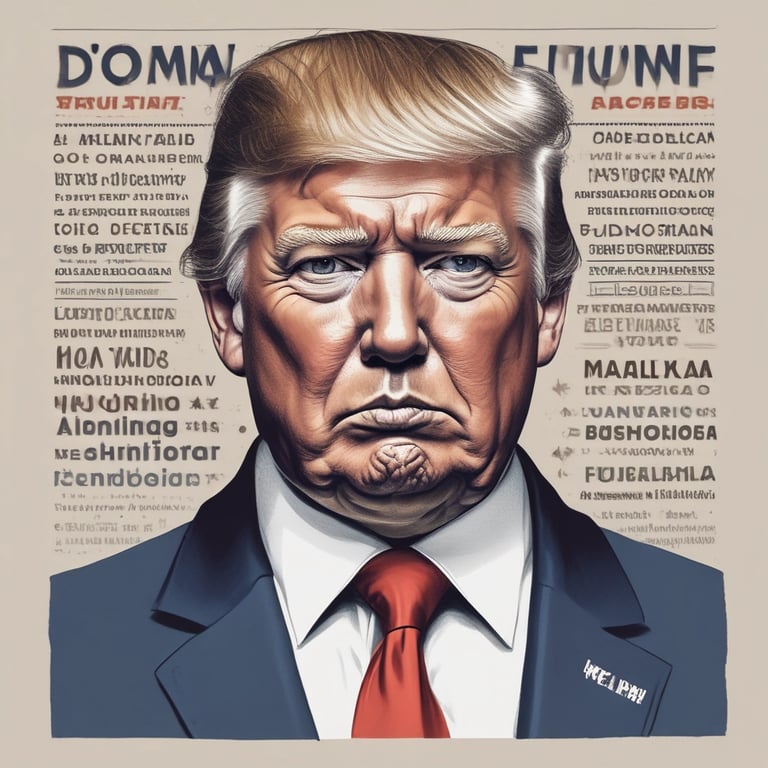How Trump's taxes tax the world
ACTIVISM


President Donald Trump’s aggressive use of import taxes has triggered one of the most significant global trade shakeups since World War II. His sweeping tariff plans, targeting virtually all imports into the United States, have created ripples across economies, challenged diplomatic relationships, and raised fundamental questions about the future of global trade. This article breaks down the nature of Trump’s tariffs, their motivations, and the far-reaching impact they may have, particularly on countries like India and the broader global economy.
A Global Tariff Blitzkrieg
In a historic and controversial move, Trump announced a baseline 10% import tax on all goods entering the United States, with significantly higher rates for about 60 trade partners deemed “worst offenders.” These include major global players such as China, the European Union, Japan, and India. This tariff escalation marks the latest chapter in Trump’s broader trade agenda, one he has consistently championed since his 2016 campaign under the banner of “America First.”
What differentiates this wave of tariffs from previous rounds is its all-encompassing nature. Earlier, Trump had selectively imposed duties—on steel, aluminum, cars, and select Chinese goods. But the new approach is broader, more punitive, and more abrupt. Some of the most staggering figures include:
54% total tariffs on Chinese goods
26% on Indian goods
24% on Japanese imports
49% on Cambodian goods
46% on Vietnam
And an eye-popping 50% on goods from Lesotho
Even traditional allies like the UK and EU haven’t been spared, facing new tariffs of 10% and 20%, respectively.
Interestingly, Canada and Mexico—two of the US’s closest trade partners—are currently exempt from the latest tariffs due to existing agreements and earlier negotiations.
The Rationale Behind the War on Trade
The White House framed the move as a declaration of economic independence, with Trump using unusually strong language to justify the drastic measures. In a fiery Rose Garden speech, he claimed that the US had been “looted, pillaged, raped and plundered” by both allies and adversaries for over 50 years. In his view, other countries have imposed unfair tariffs, currency manipulation, and regulatory barriers that put American workers and businesses at a disadvantage.
The administration sees these tariffs not merely as an economic tool, but a strategic weapon—a form of economic retaliation and leverage against what it considers predatory global trade practices. Trump argues that by forcing countries to pay higher tariffs, the US can either correct trade imbalances or force renegotiation of “unfair” trade deals.
India in the Crosshairs
India finds itself particularly affected in this latest round, facing 26% tariffs on its exports to the US. This comes amidst already strained trade relations between the two nations. In a separate earlier development, the Trump administration publicly criticized India for protectionist policies—especially around data localization, import duties on US tech products, and restrictions on e-commerce.
The tariffs on Indian goods could particularly impact key export sectors such as:
Pharmaceuticals (where India is a top global player)
Textiles and garments
Engineering goods
IT hardware and electronics
These measures not only threaten to reduce India's export revenues but also disrupt critical supply chains, affecting employment and investment in export-driven industries.
Economic Fallout: Global Recession Fears
Economists and trade analysts have reacted with alarm. Ken Rogoff, former chief economist at the IMF, likened Trump’s tariff declaration to “dropping a nuclear bomb on the global trading system.”
The reasons for such concern are manifold:
Inflation in the US: With higher tariffs, imported goods become more expensive. American consumers may see prices rise across the board—from electronics and clothing to vehicles and everyday essentials.
Supply chain disruption: Many countries had adjusted their supply chains post the first round of Trump-era tariffs on China. Southeast Asian countries like Vietnam and Cambodia, seen as alternative manufacturing hubs, are now directly targeted with 40–50% tariffs, potentially undoing years of global business strategy.
Risk of retaliation: Countries are likely to retaliate with their own tariffs on US exports, sparking full-scale trade wars. The EU, China, and even smaller economies may take reciprocal steps, further eroding trust in global trade norms.
Global economic slowdown: Many developing nations rely heavily on exports to the US for economic growth. Tariffs that reduce competitiveness in the US market could trigger slowdowns, job losses, and even recessions in export-reliant economies.
The Political Theatre of Tariffs
While the economic rationale is debatable, the political logic for Trump is clearer. Tariffs serve as a rallying cry to his base. They project strength, assertiveness, and nationalism—key themes in Trump’s political brand.
By positioning himself as the defender of the American worker against global exploitation, Trump taps into a deep vein of economic anxiety and populist sentiment, particularly in manufacturing-heavy regions of the US Midwest. Whether or not the tariffs deliver long-term economic benefits, they are likely to deliver short-term political dividends.
However, some critics argue that the long-term consequences—higher consumer costs, loss of diplomatic goodwill, and global economic instability—could ultimately boomerang back on the US economy and Trump's political legacy.
Shifting Global Alliances and Trade Patterns
Another likely consequence of Trump’s tariffs is the realignment of global trade alliances. Countries hit hardest may seek to deepen intra-regional trade, reduce dependence on the US market, and build new supply chain resilience.
India and the EU could push harder for their long-discussed free trade agreement.
China may accelerate efforts to boost trade ties within Asia and Africa.
Emerging economies may pursue South-South trade more aggressively to bypass dependence on the West.
Paradoxically, Trump’s policies could be the catalyst that accelerates a multipolar trading world—one less centered on American dominance.
Conclusion: Taxing the World to Fix America?
Trump’s tariff strategy is bold, disruptive, and deeply controversial. By imposing sweeping taxes on imports, he seeks to remake the global trade system in America’s image. But this approach risks unintended consequences: economic strain on US allies, retaliation, global instability, and a potential trade war spiral.
India and many other nations are likely to feel the pinch, not just in terms of immediate export losses but in broader strategic uncertainties around how to engage with an increasingly inward-looking America.
In the end, “How Trump’s Taxes Tax the World” is not just a clever title—it’s a reality many nations are now grappling with, as they adjust to a global order where tariffs, not treaties, define the rules of engagement.
